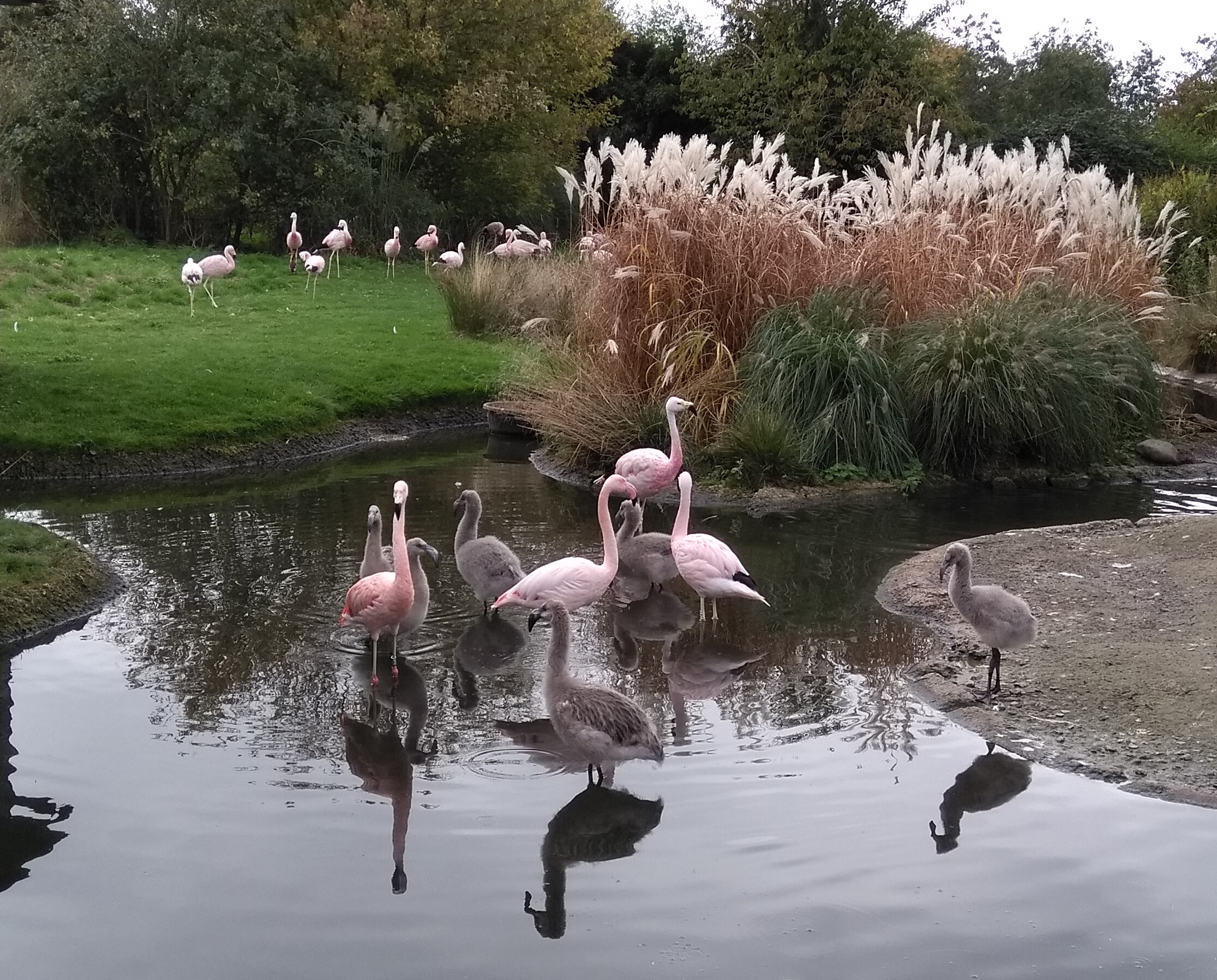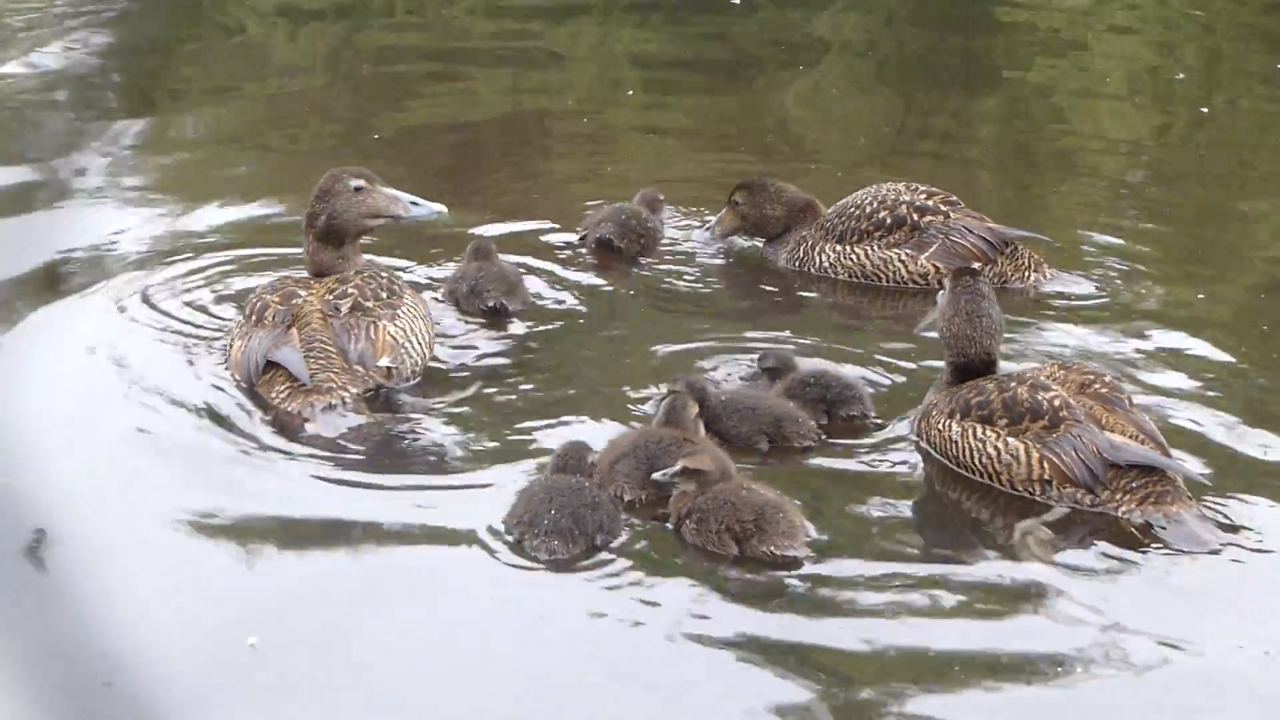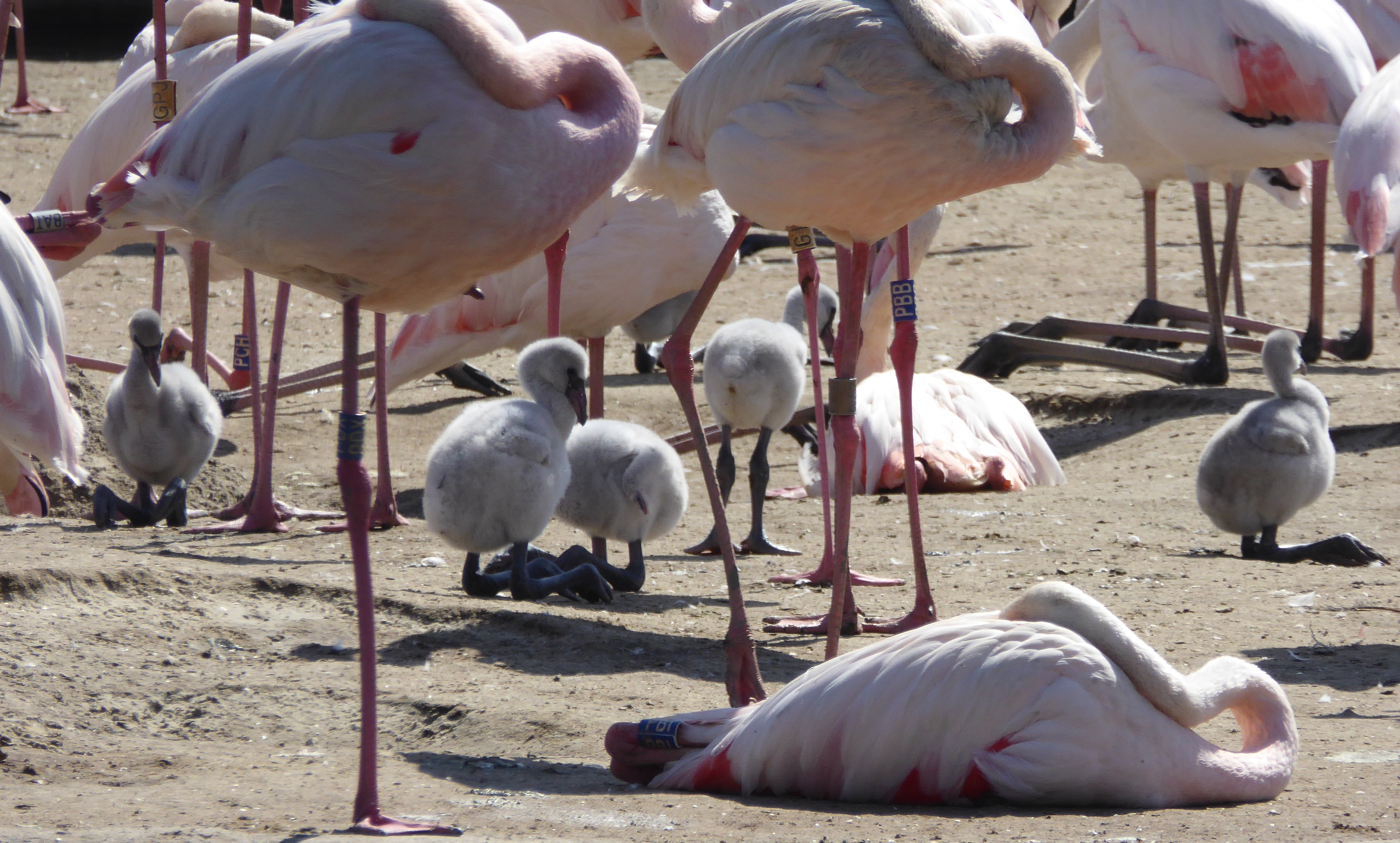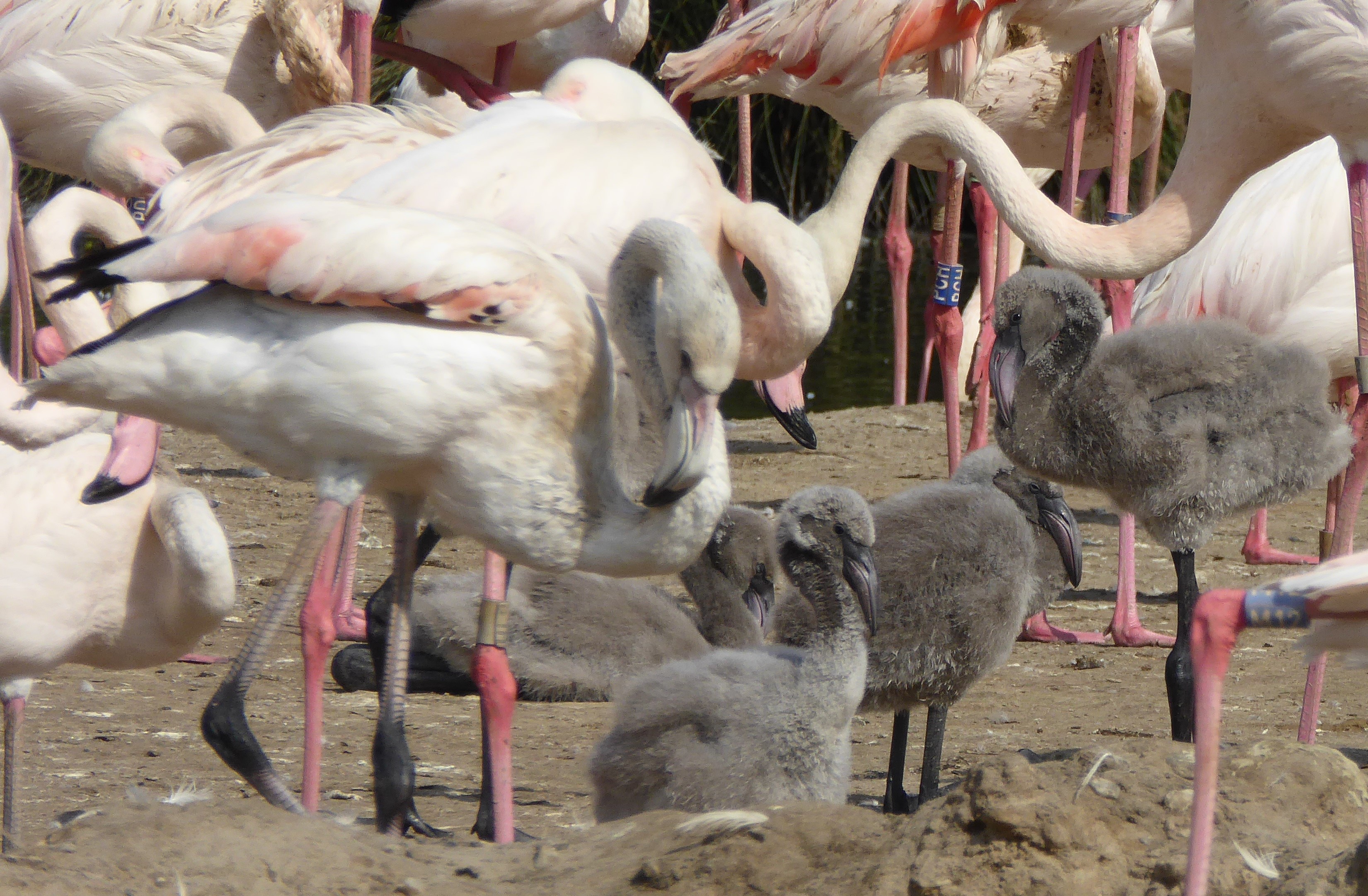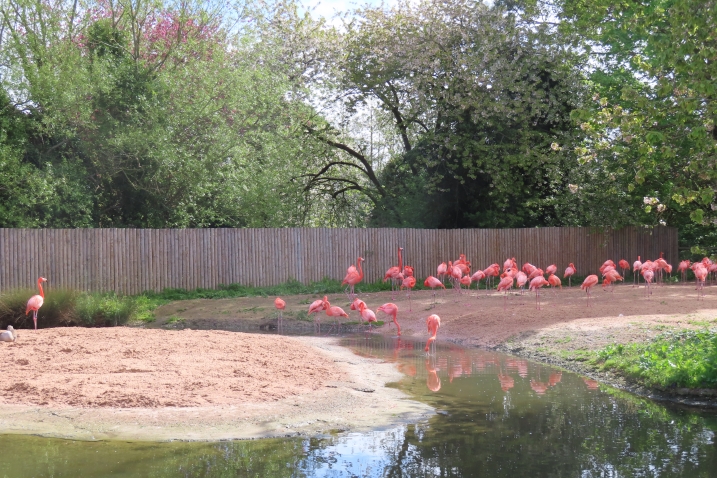Flamingo baby-sitting services
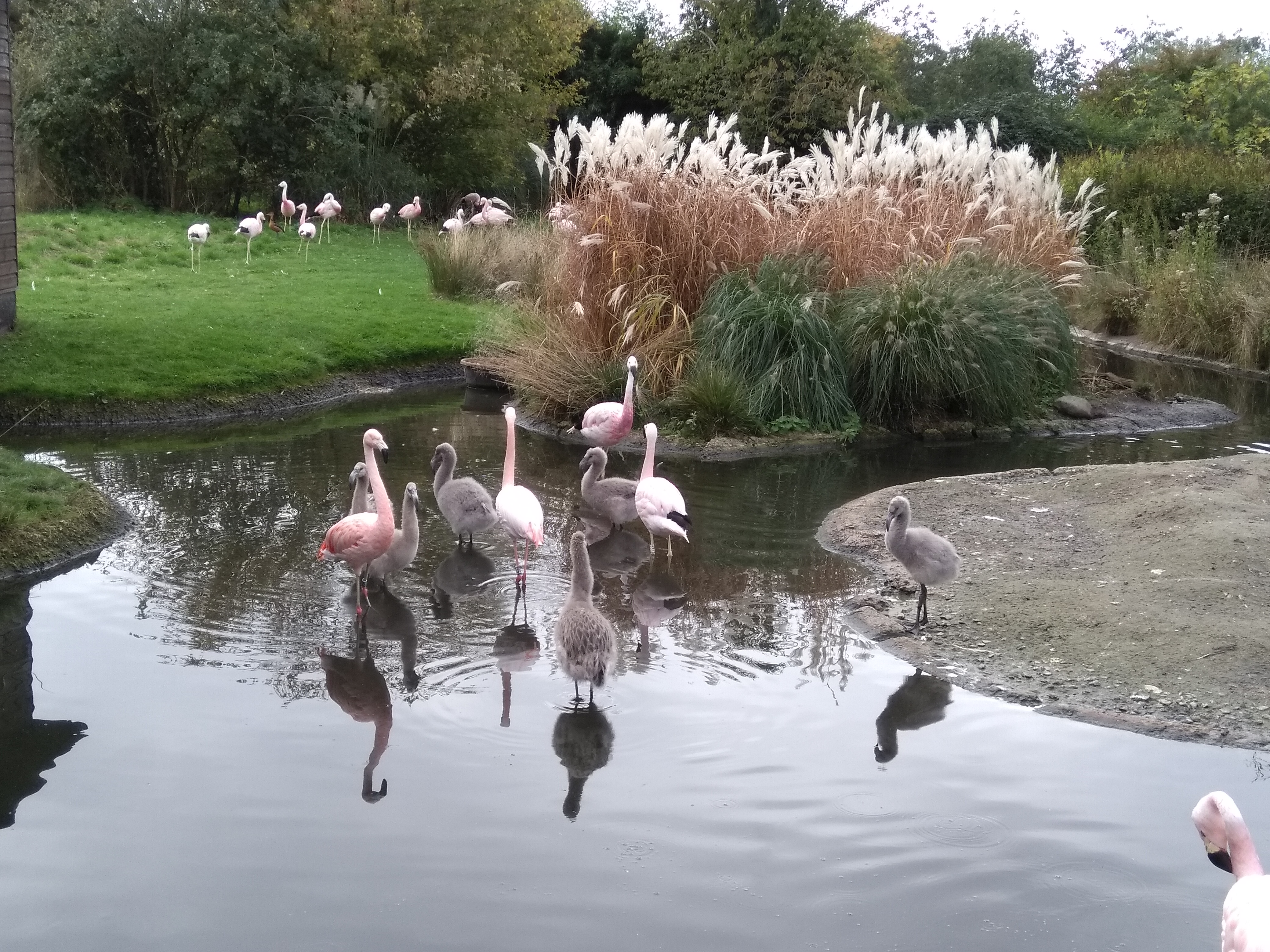 What's going on here? Chilean and greater flamingo guardians whilst foster parents go and enjoy themselves? It's a slice of 21st century society in the WWT Slimbridge Andean Flamingo Pen.
What's going on here? Chilean and greater flamingo guardians whilst foster parents go and enjoy themselves? It's a slice of 21st century society in the WWT Slimbridge Andean Flamingo Pen.
As days get shorter as autumn progresses, so flamingo chicks get bigger. Now is a good time to see some of the ways that flamingos can parent their offspring- as the chicks grow and their need for food grows, so the adults have to balance looking after their chicks with looking after themselves. To do this, they use a within-flock baby-sitting service- a flamingo crèche. In the foster flamingo flock, chicks still have fluffy parts with adult feathers emerging. And the odd splash of pink is becoming brighter. As they age, they are more likely to be seen in a crèche with a handful of adults looking after them. And as the youngsters lose their down completely, and attain all adult-type feathers so they don’t need to be crèched but can join in the main flock with the adults.
Crèching of chicks is a behaviour that all flamingo species perform. It is crucial to the survival and therefore the proper development of youngsters. The breeding flocks of flamingos at WWT centres are all large enough that breeding pairs produce enough chicks together to allow a crèche to form. Here's some footage I took back in 2014 of the greater flamingo crèche on their nesting island. This was a special moment as it was the first time that the birds had nested since being moved into their new Flamingo Lagoon exhibit. You can see the smaller chicks tightly-packed in the middle of the group, with more larger, older chicks on the edges.
https://www.youtube.com/watch?v=M9ifJ7gMs-I
So why have flamingos evolved this nursery-style behaviour?
Flamingos have an "all or nothing" breeding strategy. Flocks nest in large groups and produce a huge number of chicks in one breeding season. They may then skip several years of nesting, waiting for the best conditions for maximum success to appear once again. So when they do produce chicks, it is important for these chicks to be well looked after, because it might be a number of years into the future before the flock can breed again. Also, because male and female flamingos feed their young on crop milk that they themselves have to produce, parents have to go and feed for themselves and for their chick. So whilst collecting this extra food (and gaining extra energy) the parents need to leave their chicks alone but not unguarded. So non-breeding adults or juvenile birds not yet of nesting age make excellent baby-sitters to keep an eye out for danger.
And as you can see in the photo below
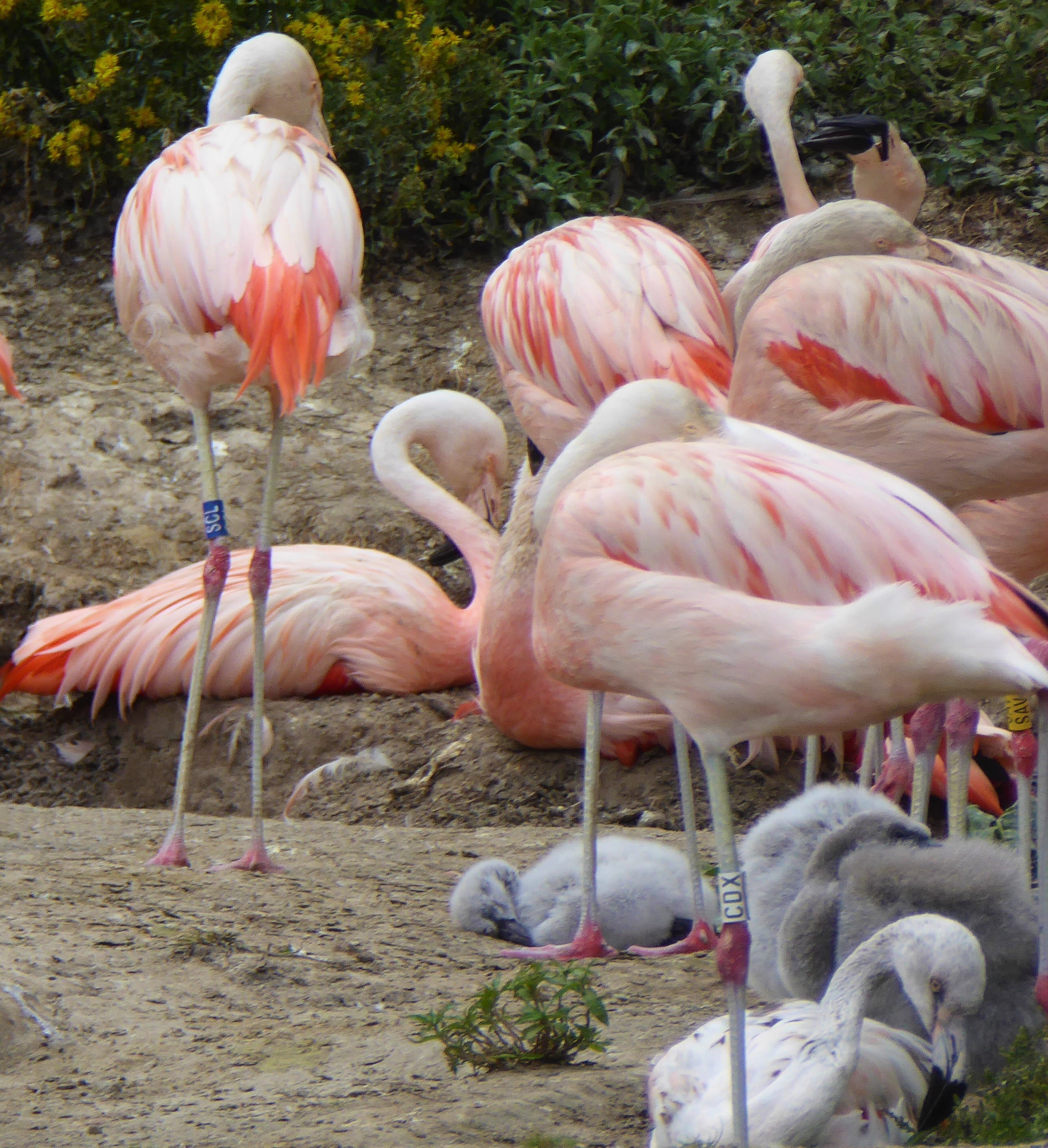 Dreaming of shrimps? A Chilean flamingo chick in a very deep sleep clearly needs another pair of eyes to watch out for it.
Dreaming of shrimps? A Chilean flamingo chick in a very deep sleep clearly needs another pair of eyes to watch out for it.
You can see the babysitters than remain behind with the group in the photo below.
As mentioned in previous posts, the Andean flamingo flock is often used as a restful, retirement home for other birds that need some extra attention. The older greater and Chilean flamingos in this photo are also taking part in parenting behaviours even though these are not their chicks and they played no part in the breeding event. In all adult flamingos, there is a strong urge to look out for chicks and to protect a crèche of youngsters in a colony. So these birds seem more than happy to be drafted in to keep an eye on these new arrivals.
And it's not just flamingos that crèche youngsters. There is another species held in WWT collections that does this too. Common eider ducks can gather their ducklings into huge nursery groups- which more beaks to defend ducklings and more eyes to watch out for predators. Here's a brood of eiders that hatched in the Tundra Pen at WWT Slimbridge a few years back. It's a lovely example of how multiple females keep a watch over their own ducklings, and those of others. There's a short video of how they keep a watch over these bundles of fluff below the photo.
https://www.youtube.com/watch?v=g24THptrHjE
You can watch the developments of a crèche over the course of the summer and autumn. I've included some photos below of chicks of different ages in a crèche. Young chicks will have experienced adults take care of them, but as they age and become larger, well-grown juveniles can also take part (as you can see in the lower picture).
Younger chicks in the photo over. Kept amongst a forest of legs from the adults. Older chicks in the photo below. Still under a close watch, but fewer adults are needed.
I hope that you have enjoyed this visit to the flamingo's family life. It's not just people that rely on playgroups or baby-sitters to lend a hand with childcare- many species in the animal world will do this too. On your next visit to a WWT centre that holds flamingos, look out for a crèche of youngsters; it's a great example of natural behaviour and is something that is much easier to observe in our collection birds, than can be in the wild.

